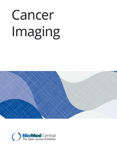
CANCER IMAGING
Scope & Guideline
Transforming Cancer Research Through Cutting-Edge Imaging
Introduction
Aims and Scopes
- Multimodal Imaging Techniques:
The journal explores various imaging modalities, including PET, CT, MRI, and ultrasound, focusing on their roles in cancer detection, treatment response assessment, and prognostication. - Radiomics and Machine Learning:
A significant emphasis is placed on radiomics, which involves extracting a large number of features from medical images to predict clinical outcomes, and the application of machine learning algorithms to improve diagnostic accuracy. - Theranostics in Cancer Imaging:
The journal highlights the development and application of theranostic agents and imaging techniques that enable personalized treatment strategies for cancer patients. - Clinical Applications and Outcomes:
Research published in the journal often evaluates the clinical efficacy of imaging techniques in predicting treatment outcomes, recurrence, and survival rates in cancer patients. - Innovative Technologies and Methodologies:
The journal actively seeks contributions on new imaging technologies and methodologies, such as hybrid imaging, advanced spectroscopy, and artificial intelligence applications, to further enhance cancer imaging capabilities.
Trending and Emerging
- Integration of AI and Deep Learning:
The use of artificial intelligence and deep learning in imaging analysis has surged, with numerous studies focusing on these technologies for automating image interpretation and enhancing diagnostic accuracy. - Radiomics for Prognosis and Treatment Response:
Radiomics, particularly its application in predicting treatment response and patient prognosis, has become a prominent theme, showcasing its potential to personalize cancer treatment. - Theranostic Imaging Approaches:
Emerging research emphasizes the role of theranostics, where imaging informs treatment decisions and outcomes, highlighting a shift towards personalized medicine in oncology. - Multimodal Imaging Strategies:
There is a growing trend towards using multimodal imaging approaches, combining various imaging modalities to improve diagnostic capabilities and treatment monitoring. - Patient-Centric Imaging Studies:
Recent publications reflect a shift towards understanding patient outcomes from imaging studies, focusing on real-world applications and the impact of imaging on treatment decisions.
Declining or Waning
- Conventional Imaging Techniques:
There is a noticeable decrease in the publication of studies focused solely on conventional imaging techniques without the integration of advanced methodologies like machine learning or radiomics. - Single-Modality Studies:
Research that examines the efficacy of a single imaging modality, such as standalone CT or MRI, without a multimodal approach is becoming less prevalent, as the field increasingly favors integrated imaging solutions. - Basic Imaging Protocols:
Papers detailing standard imaging protocols or basic imaging findings are less frequently published, with a shift towards studies that evaluate the predictive value or clinical impact of imaging findings. - Historical Comparisons:
There is a diminishing focus on retrospective studies that compare historical imaging data or techniques, as the journal moves towards more innovative, forward-looking research.
Similar Journals

Tomography
Elevating the standards of medical imaging research.Tomography is an esteemed peer-reviewed journal published by MDPI, focusing on a broad spectrum of topics related to medical imaging and diagnostics. Launched in 2015, this Open Access journal serves as a vital platform for researchers, professionals, and students in the fields of medicine, radiology, nuclear medicine, and imaging. With an impressive impact factor reflecting its relevance, the journal has achieved a quartile ranking of Q2 in both Medicine (Miscellaneous) and Radiology, Nuclear Medicine, and Imaging as of 2023. Renowned for disseminating high-quality research, Tomography welcomes original research articles, reviews, and technical notes, fostering innovation and collaboration within the scientific community. Housed in Basel, Switzerland, the journal aims to bridge the gap between fundamental research and clinical application, appealing to a diverse readership eager to advance the field of medical imaging.

Hong Kong Journal of Radiology
Fostering Excellence in Radiology and Imaging StudiesHong Kong Journal of Radiology, an esteemed publication of the Hong Kong Academy of Medicine Press, serves as a vital platform for disseminating innovative research in the field of radiology, nuclear medicine, and imaging. Established in 2011 and operating under an Open Access model since 2018, this journal not only promotes the sharing of knowledge but also enhances global accessibility to cutting-edge studies. With its ISSN 2223-6619 and E-ISSN 2307-4620, the journal strives to engage a diverse audience ranging from experienced professionals to aspiring scholars in the medical imaging domain. Despite its current ranking in the Q4 quartile of the Scopus category for radiology, the journal is committed to improving its standing by featuring high-quality research that addresses pressing issues in the field. The journal's convergence from 2011 to 2024 reflects its ongoing dedication to fostering academic excellence and encouraging collaborative discourse among researchers and practitioners globally. Located in Hong Kong, the journal plays a significant role in shaping the future of radiology education and practice in China and beyond.

Journal of the Belgian Society of Radiology
Fostering Collaborative Research in RadiologyThe Journal of the Belgian Society of Radiology, published by UBIQUITY PRESS LTD, is a pivotal resource in the field of radiology, nuclear medicine, and imaging. With an ISSN of 2514-8281 and E-ISSN of 2514-8281, this open access journal has been dedicated to fostering the dissemination of high-quality research since its establishment in 2010. Distributed from the United Kingdom, it offers a platform for innovative studies, case reports, and reviews that contribute to the advancement of radiological sciences. Despite its current Q4 category ranking within Scopus, the journal plays a critical role in sharing essential findings with a community of over 1,200 professionals and students eager to stay abreast of emerging trends and technological advancements in imaging. By enabling unrestricted access to its publications, the journal encourages collaborative research and knowledge exchange that transcends geographic boundaries, solidifying its importance for both established researchers and emerging scholars in the discipline.

EUROPEAN RADIOLOGY
Your Gateway to the Latest in RadiologyEUROPEAN RADIOLOGY, published by SPRINGER, stands as a prestigious international journal in the field of radiology, nuclear medicine, and imaging, with an impressive impact factor that underscores its significance among peers. With an ISSN of 0938-7994 and an E-ISSN of 1432-1084, this journal provides a platform for cutting-edge research and advancements in medical imaging from 1991 to 2024. Recognized as a Q1 journal in both general Medicine and the specialized Radiology category by 2023, EUROPEAN RADIOLOGY ranks an impressive #17 out of 333 in its field according to Scopus, placing it in the 95th percentile. While it does not currently offer Open Access options, the journal remains essential reading for researchers, professionals, and students striving to stay at the forefront of developments in diagnostic imaging and related technologies. By contributing to a comprehensive understanding of radiological practices, EUROPEAN RADIOLOGY plays a crucial role in shaping the future of medical diagnosis and patient care.

Radiologia Medica
Innovative Research Bridging Disciplines in Radiology.Radiologia Medica, published by Springer-Verlag Italia SRL, is a premier Italian journal dedicated to the field of radiology, nuclear medicine, and imaging. With a rich history dating back to 1947, this journal has consistently provided cutting-edge research and findings, contributing significantly to advancements in medical imaging techniques and practices. As evidenced by its impressive Q1 rankings in both Medicine (Miscellaneous) and Radiology, Nuclear Medicine and Imaging, Radiologia Medica holds a prestigious position within the top tier of medical journals, ranked #11 out of 333 in its category and residing in the 96th percentile according to Scopus metrics. Although it is not currently offered as an Open Access journal, its robust subscription model supports extensive research dissemination. Researchers, professionals, and students alike will find invaluable insights and knowledge critical for advancing their understanding and practice within this dynamic field. Situated in Milan, Italy, Radiologia Medica continues to be an influential platform for the exchange of high-quality research, bridging various disciplines and promoting excellence in radiological science.
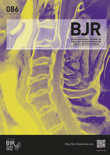
BRITISH JOURNAL OF RADIOLOGY
Advancing Radiology Through Innovation and ExcellenceBritish Journal of Radiology is a leading peer-reviewed journal published by the British Institute of Radiology, dedicated to advancing the field of radiology, nuclear medicine, and imaging. With a prestigious history dating back to 1945, this journal is at the forefront of disseminating cutting-edge research and innovations that significantly impact clinical practice. Currently enjoying a Q1 ranking in the field of radiology and Q2 in general medicine for 2023, it is recognized for its rigorous standards and high-quality content, ranking #87 out of 333 in Scopus for specialties related to Medicine, Radiology, Nuclear Medicine, and Imaging, placing it in the 74th percentile. Researchers, professionals, and students are encouraged to engage with the latest findings and comprehensive reviews presented within its pages, which contribute not only to academic discourse but also to the evolution of practice in the wider medical community.

Indian Journal of Radiology and Imaging
Pioneering Research for Tomorrow's Imaging SolutionsThe Indian Journal of Radiology and Imaging, published by THIEME MEDICAL PUBL INC, is a prominent open-access journal in the field of radiology, nuclear medicine, and imaging. Since its inception in 1984, the journal has provided a platform for researchers, professionals, and students to disseminate innovative research and findings in diagnostic imaging. With a growing impact factor and categorized in the Q3 quartile according to the 2023 rankings, it ranks among the notable journals in its field, although it currently stands at Rank #244 out of 333 within Scopus, reflecting its competitive position in radiology research. The journal, accessible to a global audience since 1999, aims to advance the knowledge and practice in imaging by inviting diverse contributions, including original research articles, reviews, and case reports. Its commitment to open-access publication fosters wider dissemination and collaborative discourse, crucial for the dynamic landscape of medical imaging.
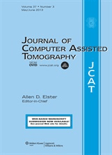
JOURNAL OF COMPUTER ASSISTED TOMOGRAPHY
Enhancing Radiology with Cutting-Edge ResearchJOURNAL OF COMPUTER ASSISTED TOMOGRAPHY, published by Lippincott Williams & Wilkins, stands as a vital resource in the field of Radiology, Nuclear Medicine, and Imaging. Since its inception in 1977, this journal has been dedicated to advancing the understanding and application of computer-assisted tomography, emphasizing innovative research and clinical practices that enhance diagnostic imaging techniques. With an impact factor reflective of its rigorous scholarship and relevance—ranking in the Q3 category—the journal serves as an essential platform for contributors and readers alike, navigating the challenges and opportunities within a rapidly evolving field. Researchers, professionals, and students are encouraged to engage with the rich repository of articles that cover emerging technologies, clinical applications, and theoretical advancements, collectively fostering a deeper comprehension of imaging sciences. Although not currently designated as an open-access journal, it continues to enhance discourse in the community from its headquarters in Philadelphia, PA, maintaining a commitment to the highest standards of academic excellence.
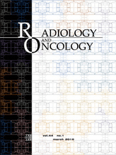
Radiology and Oncology
Bridging gaps in radiology and oncology for a healthier tomorrow.Radiology and Oncology is a prominent open access journal that has been instrumental in advancing the fields of radiology and oncology since its inception in 1992. Published by SCIENDO in Germany, this journal aims to disseminate high-quality research articles, reviews, and case studies that address critical issues in diagnostic imaging and cancer treatment. As of 2023, it holds a commendable impact factor within the Q2 category for Radiology, Nuclear Medicine, and Imaging, and a Q3 standing in the field of Oncology—reflecting its importance in these critical areas of medicine. With a focus on promoting innovative research and interdisciplinary collaboration, Radiology and Oncology is indexed in Scopus, where it ranks #122 among 333 in its category and #187 among 404 in Oncology, showcasing its wide-reaching impact and relevance. The journal is fully open access since 2007, ensuring that vital research is accessible to the global medical community and fostering advancements in patient care strategies and therapeutic methodologies. By providing a platform for the latest developments and discoveries, Radiology and Oncology is a pivotal resource for researchers, clinicians, and students dedicated to improving outcomes in cancer care through innovative imaging techniques.
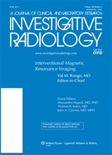
INVESTIGATIVE RADIOLOGY
Transforming Radiological Research into PracticeINVESTIGATIVE RADIOLOGY, published by Lippincott Williams & Wilkins, is a premier peer-reviewed journal dedicated to disseminating innovative research in the fields of radiology, nuclear medicine, and imaging. With a notable impact factor underscored by its impressive ranking—10th out of 333 in its category, positioning it within the 97th percentile—this journal serves as a vital resource for researchers, professionals, and students eager to stay at the forefront of advancements from 1966 to 2024. Although it does not offer open access, the high-quality studies and reviews found within its pages contribute significantly to the understanding and application of modern imaging techniques. Recognized for its Q1 status in both miscellaneous medicine and radiology specializations, INVESTIGATIVE RADIOLOGY continues to play an essential role in shaping the future of diagnostic and therapeutic imaging.